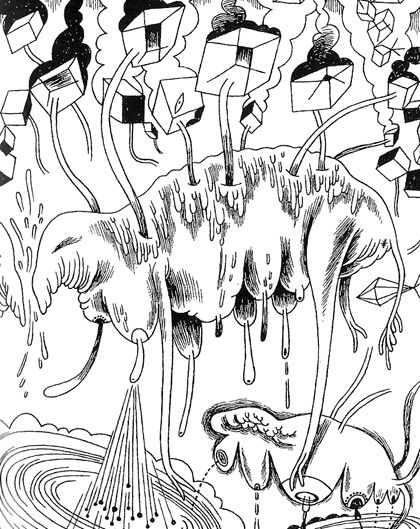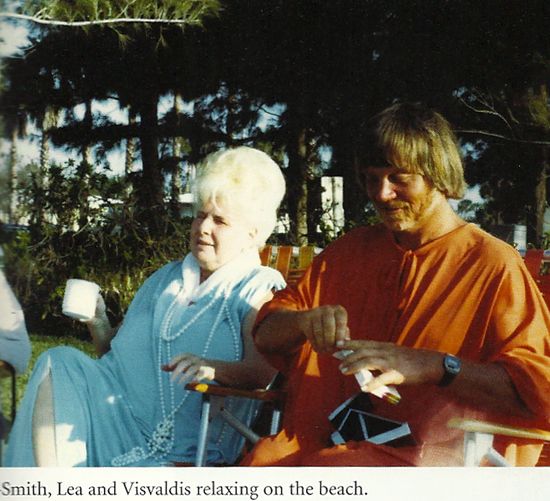I go to Fiona Smyth's book launch for her new graphic novel The Never Weres. I'd only known Fiona's art through her zines and paintings (the scan below is from a Hell Passport volume) so it was nice to see how seamlessly she made the shift over to young adult material.

The Never Weres is excellent, a lot of really intelligent world building. Each panel is full of in-jokes and references to other artists, in a nice King City kind of way. Fiona's been a pretty important figure in Toronto, and most artists I know here have been influenced by her work in one way or another.
Patrick Kyle's at the launch and he tells me about his sleeping problems. I'm constantly interested in what hours cartoonists keep. I assume everyone keeps irregular hours like me, but I know that isn't actually the case.
I sometimes wonder if imposing some more structure on my own work day would be helpful. I often have nights where I only sleep in short bursts, and when I can't get back to sleep I'll spend an hour doing some lettering or drawing out panel borders or something. I work five feet away from where I sleep, and when I wake up each morning the first thing I see are the unfinished comic pages I have tacked on my wall. But maybe that's super common - having very little delineation between "work" life and "everything else" life.
I kill the afternoon catching up on reading Brenda Doyle's Thoughts on Therafields blog. The blog began as a response to a recent book by Grant Goodbrand on the subject, which I've also been working through.
 Therafields was an experimental psychoanalytic community in Toronto that lasted from the '60s to the '80s, and something I've been interested in since a few years back, when a friend of mine hired me to transcribe some interviews he conducted for a paper he was writing on the group. I ended up transcribing about 150 hours of conversations with a few dozen former members and therapists.
Therafields was an experimental psychoanalytic community in Toronto that lasted from the '60s to the '80s, and something I've been interested in since a few years back, when a friend of mine hired me to transcribe some interviews he conducted for a paper he was writing on the group. I ended up transcribing about 150 hours of conversations with a few dozen former members and therapists.
The group's founder was an untrained therapist named Lea Hindley-Smith who believed in the integration of psychoanalysis into everyday life. Therafields placed a particular emphasis on group therapy, and was known for its "house groups." Anywhere between ten to twenty people would live under the same roof together while engaging in intense, weekly group therapy sessions with one another. These house groups could last for years. At its peak, Therafields had approximately nine hundred members, five hundred of whom lived in house groups. They owned around thirty properties in Toronto, as well as a farm in Orangeville and a property in Florida. Gradually, a cult of personality formed around Hindley-Smith, who wielded a pretty significant influence on the lives of group members. In a few extreme cases, she went as far as assigning children to the care of different families.
Of particular interest to me has been Hindley-Smith's younger lover, Visvaldis Upenieks. Upenieks was an architect, and the two met in therapy. Here's a photo from Goodbrand's book:

In addition to designing the Orangeville farm ("The Willow"), Upeniaks did the book covers for a series of novels Hindley-Smith wrote. The novels themselves are pretty lousy but they're beautifully designed and worth collecting.



Michael DeForge is an artist and illustrator, and the creator of Lose.






